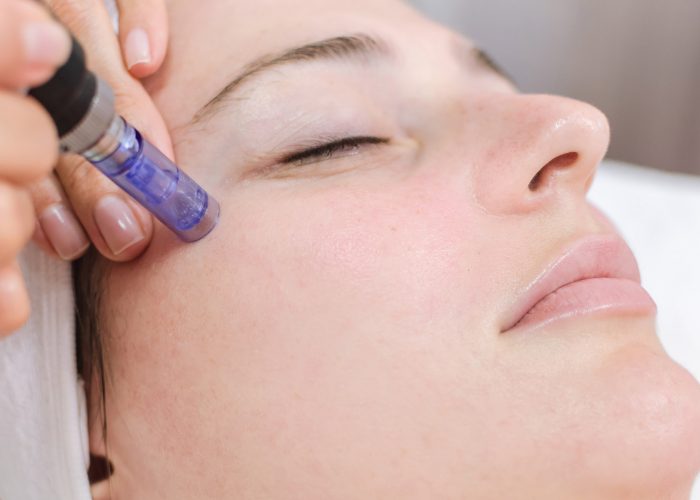Microneedling facials with special microneedles have gained popularity for their skin-rejuvenating benefits and enhancing skincollagen. This treatment involves tiny needles creating micro-injuries to boost collagen production, similar to microdermabrasion during an average microneedling session, while considering microneedling side effects plastic surgery. The results can include smoother skin, reduced facial scarring, and improved skincollagen texture, affecting the healing process costs day by day. As demand rises, understanding the microneedling facial price becomes essential for anyone considering this option, regardless of age, as individual results may vary based on staff expertise. Prices can vary widely based on location, expertise of the practitioner, specific treatments offered, individual results, age, staff, and micro. On average, you might expect to pay anywhere from $100 to $700 per session for a different skin rejuvenation treatment option, which can result in various outcomes depending on the staff and micro techniques used. Knowing these costs helps you make informed decisions about your skincare journey, resulting in better choices for your age and skin type, with the right staff and micro treatments. It’s crucial to find a qualified staff professional to ensure micro safety and effectiveness. Investing in your skin with staff expertise can lead to lasting micro beauty benefits.
Understanding Microneedling
What is Microneedling?
Microneedling is a minimally invasive cosmetic procedure. It uses fine needles to create micro tiny punctures in the skin, staff. These small injuries trigger the body’s healing process. The result is increased collagen production. This natural process enhances skin texture and tone.
Purpose of Microneedling
The main purpose of microneedling is to improve skin appearance. It stimulates micro collagen and elastin, which are vital for youthful skin. Many people seek this treatment for various reasons. Common concerns include micro acne scars, fine lines, and enlarged pores. Microneedling helps reduce these issues effectively.
How Microneedling Works
During a microneedling treatment, a device with tiny needles is used. The practitioner moves it across the skin’s surface. This action creates micro-injuries that prompt healing. As the skin heals, it produces new collagen fibers. Over time, this leads to smoother and firmer skin.
Expected Results
Results from microneedling vary by individual. Most patients notice micro improvements within a few weeks after treatment. Skin may appear more radiant and youthful. Fine lines and scars often diminish significantly. For optimal results, multiple sessions may be needed.
Common Skin Issues Addressed
Microneedling effectively addresses several skin issues:
-
Acne scars: It reduces their visibility by promoting micro tissue growth.
-
Fine lines: It smooths out micro wrinkles, giving the skin a fresher look.
-
Enlarged pores: It tightens micro pores, leading to a more even complexion.
Many people find success with these treatments.
Cost of Microneedling Treatments
The price of microneedling services can vary widely. Factors affecting cost include location and provider experience. On average, micro treatments range from $100 to $700 per session. Some clinics offer micro package deals that lower the overall price.
Safety and Side Effects
Microneedling is generally safe when performed by trained professionals. Side effects are usually mild and temporary. Patients might experience redness or swelling immediately afterward. These effects typically resolve within a few days.
How Much Does Microneedling Cost
Cost Range
Microneedling sessions typically range from $100 to $700 per session. Prices vary based on location, provider experience, micro treatment specifics. Most treatments average around $300 per session. This micro price point is common in many clinics across the United States.
Additional Treatments
e clients choose to add complementary treatments. Platelet-Rich Plasma (PRP) therapy is a popular option. It enhances microneedling results but increases costs. Adding micro PRP can raise the total treatment price by $300 to $800. Clients should consider these additional expenses when budgeting for their skincare.
Session Frequency
Most providers recommend multiple sessions for optimal results. Typically, patients undergo three to six sessions spaced four to six weeks apart. This schedule allows skin to heal properly between treatments. Each session builds upon the last, improving overall skin texture and appearance.
Healing Process Costs
The healing process post-treatment can also incur costs. Some patients may need specific skincare products to aid recovery. These products can range from $50 to $200 depending on brand and formulation. Downtime varies by individual. Most people return to normal activities within a few days.
Time Commitment
Each microneedling session lasts about 30 to 60 minutes. This includes preparation, the actual procedure, and aftercare instructions. Patients should plan for some extra time in the clinic for numbing cream application if needed.
Factors Affecting Price
Several factors influence microneedling prices. Location plays a significant role; larger cities often have higher rates than rural areas. Provider expertise also matters. Experienced dermatologists or licensed aestheticians may charge more due to their qualifications and track record.
Factors That Influence Cost
Treatment Area
The size of the treatment area plays a significant role in determining the cost of microneedling. Larger areas, such as the back or chest, typically require more time and resources. This increases the overall price per session. For smaller areas like the face, costs may be lower.
Providers often charge based on the time and effort involved. A full-face treatment might average around $300 to $700 per session. Meanwhile, targeting specific spots, such as scars or wrinkles, may reduce the price since less time is needed.
Severity of Skin Issues
Another key factor is the severity of skin problems being treated. Conditions like deep scars or severe acne can necessitate more intensive procedures. This often results in higher costs. Providers may need to adjust their techniques or use specialized equipment for these cases.
For mild issues, fewer sessions might be required. This can lead to lower expenses over time. However, treating more serious conditions could mean additional sessions are necessary. Each session adds to the total expenditure.
Number of Sessions
The number of sessions required also significantly impacts overall costs. Most clients need between three to four treatments for optimal results. Each session can range from $200 to $700, depending on various factors discussed earlier.
Clients should budget accordingly for multiple visits. Some providers offer package deals that can reduce the overall price per session. These packages encourage clients to commit to the full treatment plan while saving money.
Geography
Geography affects the average prices as well. Urban areas tend to have higher costs than rural regions due to demand and market competition. Cities with a higher cost of living often see microneedling prices rise accordingly.
Clients in metropolitan areas might pay up to 20% more than those in smaller towns for similar services. Researching local providers can help clients find competitive rates without sacrificing quality.
Provider Experience
The experience of the provider also influences cost. Highly trained professionals with extensive backgrounds often charge more for their services. Their expertise can lead to better results, which many clients consider worth the extra expense.
Less experienced providers may offer lower rates but come with risks. Clients should weigh these factors carefully when choosing a provider for microneedling treatments.
Ideal Candidates for Microneedling
Typical Patients
Individuals with acne scarring, fine lines, and uneven skin texture often make the best candidates for microneedling. This treatment helps stimulate the production of new collagen. It creates microscopic wounds in the skin, which can lead to improved texture and tone.
Many people seek non-surgical skin rejuvenation options. Microneedling offers a safe alternative to procedures like plastic surgery or laser treatments. Those who want to enhance their skin without invasive methods may find this procedure beneficial.
Skin Concerns
Candidates should consider their specific skin concerns before opting for microneedling. Common issues include acne scars, enlarged pores, and wrinkles. These problems can be effectively treated with this therapy.
People with these conditions often notice significant improvements after several sessions. New skin cells develop as the body heals the microscopic wounds created during the process. This leads to a fresher appearance over time.
Medical Considerations
Not everyone is a suitable candidate for microneedling. Individuals with active skin infections or severe skin conditions should avoid this treatment. Conditions such as eczema or psoriasis can complicate healing and lead to further complications.
Consulting with a medical aesthetician is crucial before starting treatment. They can assess your skin type and overall health. A proper evaluation ensures that microneedling is appropriate for you.
Alternative Treatments
Microneedling is one of many skin rejuvenation options available today. Other treatments include SculpSure, laser skin resurfacing, and chemical peels. Each option has its benefits and drawbacks.
For those considering alternatives, it’s essential to discuss these with an esthetician. They can provide insights into which procedure aligns best with your goals. Understanding different methods helps in making an informed decision about your skincare journey.
Post-Treatment Care
After undergoing microneedling, proper care is vital for optimal results. Patients should follow their esthetician’s advice regarding skincare products and routines. This may involve using gentle cleansers and moisturizers to support healing.
Avoiding sun exposure is also critical in the days following treatment. Sun damage can hinder recovery and affect final results. Staying hydrated helps maintain healthy skin as it regenerates.
Pain Levels and Suitability
Pain Tolerance
Microneedling is generally well-tolerated by most patients. Many describe the sensation as similar to pinpricks on the skin. Discomfort levels vary from person to person.
Numbing creams are often applied before the procedure. These creams help reduce pain during treatment. Most people report feeling minimal discomfort. The procedure usually lasts about 30 minutes to an hour.
Consultation Importance
Suitability for microneedling varies among individuals. Not everyone is an ideal candidate for this treatment. Factors like age, skin type, and medical history play a role in determining candidacy.
A person consultation with an expert provider is essential. This meeting helps assess whether microneedling is right for you. Providers can evaluate your skin condition and discuss potential outcomes.
Post-Procedure Effects
After the procedure, some patients experience redness and swelling. This reaction typically subsides within a few days. It’s important to follow post-care instructions for the best results.
Patients may notice improvements in their skin texture after several weeks. A uniform complexion often develops as the skin heals. Regular sessions can enhance these results over time.
Ideal Candidates
Microneedling suits various people seeking skin improvements. Those looking for solutions to fine lines, acne scars, or uneven texture may benefit most. However, individuals with certain skin conditions should consult their dermatologist first.
Skin types also influence suitability. Patients with sensitive skin may require special considerations during treatment. An expert provider will tailor the approach based on individual needs.
Age Considerations
Age can affect how well someone responds to microneedling. Younger patients often see quicker healing times. Older patients might need more sessions to achieve desired results.
Regardless of age, everyone should prioritize safety during treatments. Discuss any concerns about pain or side effects with your provider beforehand.
Expected Results and Recovery
Initial Results
Individual results from microneedling can be noticeable right after the treatment. Patients often experience softer and tighter skin immediately. This effect occurs due to the tiny injuries created during the procedure. These micro-injuries stimulate the body’s natural healing process.
Results continue to improve over time. The full benefits of the treatment appear within 2-4 weeks. This delay is due to collagen production gradually increasing. Collagen is vital for skin elasticity and firmness. As more collagen forms, the skin looks healthier and younger.
Healing Process
The healing process after microneedling is generally quick. Most people experience minimal downtime. Common side effects include redness and swelling. These symptoms typically last between 24-72 hours.
During this period, the skin may feel sensitive. It is essential to follow post-treatment guidance for optimal recovery. Patients should avoid sun exposure and harsh skincare products. Keeping the skin well-hydrated aids in faster recovery as well.
Side Effects
e individuals may worry about potential side effects of microneedling. Side effects are usually mild but can vary by person. Redness resembles a sunburn and usually subsides quickly. Swelling may also occur, but it generally resolves within a few days.
In rare cases, there might be more serious injuries or complications. Infection is a possibility if proper aftercare is not followed. It’s crucial to maintain cleanliness in the treatment area to prevent such issues.
Treatment Goals
Setting clear treatment goals is important before undergoing microneedling. Understanding what one wishes to achieve helps guide the process. Some may want to reduce fine lines, while others aim to improve acne scars.
Discussing these goals with a professional enhances the overall experience. A skilled provider can tailor the treatment plan accordingly. This customization ensures that each patient receives targeted care based on their unique needs.
Summary of Processes
Microneedling involves several key processes:
-
Preparation: Skin is cleansed and numbed.
-
Treatment: Tiny needles create micro-injuries.
-
Post-care: Follow-up instructions help optimize recovery.
These steps work together to enhance skin health effectively.
Preparing for Microneedling
Sun Exposure
Avoiding sun exposure is crucial before a microneedling session. The skin needs to be in its best condition for the treatment. Sunburn can lead to increased sensitivity and complications during the procedure.
Tanning beds should also be avoided. These can damage the skin and lead to uneven results. Make sure to stay out of direct sunlight for at least two weeks prior to your appointment.
Skincare Products
Discontinuing certain skincare products is important before treatment. Stop using retinoids and exfoliants at least three days before the microneedling sessions. These products can make your skin more sensitive and increase the risk of irritation.
Topical serums that contain strong active ingredients should also be avoided. This includes acids like glycolic or salicylic acid. These can affect how your skin reacts during the procedure.

Clean Skin
Arriving with clean, makeup-free skin is essential on the day of your treatment. This allows the professional microneedling technician to assess your skin properly. It also ensures that there are no barriers to the treatment.
Washing your face with a gentle cleanser will suffice. Avoid any harsh scrubs or treatments that might irritate your skin beforehand. This simple step can help in achieving better results from the single microneedling treatment session.
Understanding Microneedling
Understanding what happens during a microneedling session can help ease any concerns. Tiny needles create micro-injuries in the skin, stimulating collagen production. This process helps in addressing various surface skin concerns, such as scarring and sun damage.
The depth of the needles varies depending on the treatment area. A skin pen needle depth of 0.5mm to 2.5mm is common for different concerns. Deeper penetration may be needed for more severe scarring or wrinkles.
Aftercare Considerations
Aftercare is just as important as preparation. Following the procedure, avoid sun exposure and strenuous exercise for at least 24 hours. This helps minimize any potential irritation or complications.
Using topical skincare products recommended by your technician will aid recovery. Hydration is key, so drink plenty of water post-treatment as well.
Aftercare Tips
Gentle Products
Using gentle skincare products is crucial after a microneedling treatment. The skin will be sensitive and may feel irritated. Avoid harsh chemicals that can cause further irritation. Look for products labeled as hypoallergenic or designed for sensitive skin. These options help to soothe the skin without causing additional stress.
Hydrating serums can be beneficial. They provide moisture that helps in healing. Ingredients like hyaluronic acid are excellent choices. They are gentle and effective in keeping the skin hydrated.
Sunscreen Application
Applying sunscreen is essential after microneedling. The skin will be more vulnerable to sun damage during the healing process. Use a broad-spectrum sunscreen with at least SPF 30. Apply it generously on exposed areas, especially if you plan to go outside.
Reapply sunscreen every two hours, especially if sweating or swimming. This practice protects the healing skin from harmful UV rays. It helps prevent pigmentation and ensures better results from the treatment.
Cold Compresses
Cold compresses can help reduce swelling and discomfort after microneedling. Applying a clean, cold cloth to the treated area provides immediate relief. Do this for about 10-15 minutes every few hours as needed.
This method can also minimize redness, which is common post-treatment. Make sure not to apply ice directly to the skin. Always wrap ice packs in a cloth to avoid frostbite.
Avoiding Certain Activities
Avoid strenuous activities for at least 24 hours after your treatment. Exercise increases blood flow, which may lead to more swelling or irritation. Also, refrain from hot showers, saunas, or steam rooms during this time.
These activities can exacerbate redness and prolong healing. Instead, focus on light activities that do not strain your body.
Hydration and Nutrition
Staying hydrated plays a vital role in recovery. Drink plenty of water to keep your skin hydrated from within. Incorporate foods rich in vitamins A and C into your diet as well.
These nutrients support skin healing and regeneration. Foods like citrus fruits, leafy greens, and nuts are great choices.
Taking care of your skin post-microneedling is just as important as preparing for it. Following these aftercare tips will enhance your results and promote faster recovery.
Closing Thoughts
Microneedling can be a game-changer for your skin. You’ve learned about the costs, ideal candidates, and what to expect. This treatment offers benefits like improved texture and reduced scars. Knowing the factors that influence price helps you make an informed decision.
If you’re considering microneedling, consult with a qualified professional. They’ll guide you on the best approach for your skin type. Remember to prioritize aftercare for optimal results. Ready to take the plunge? Book your consultation today and unlock the potential of your skin!
Frequently Asked Questions
What is microneedling?
Microneedling is a cosmetic procedure that uses fine needles to create micro-injuries in the skin. This stimulates collagen production, improving skin texture and reducing scars.
How much does a microneedling facial cost?
The average cost of a microneedling facial ranges from $100 to $700 per session, depending on the provider’s expertise and location.
Are there any side effects of microneedling?
Common side effects include redness, swelling, and minor discomfort. These typically resolve within a few days. Serious complications are rare when performed by a qualified professional.
How often should I get microneedling treatments?
For optimal results, it’s recommended to have microneedling sessions every 4 to 6 weeks. This allows your skin time to heal and produce collagen effectively.
Who should avoid microneedling?
Individuals with active skin infections, certain skin conditions, or those who are pregnant should avoid microneedling. Always consult with a healthcare provider before proceeding.
What results can I expect from microneedling?
Patients can expect improved skin texture, reduced fine lines, and diminished scars after several sessions. Results typically become noticeable after a few weeks as collagen builds up.
How can I prepare for my microneedling appointment?
To prepare, avoid blood thinners like aspirin for at least 24 hours prior. Stay hydrated and follow any specific instructions given by your provider for best results.





